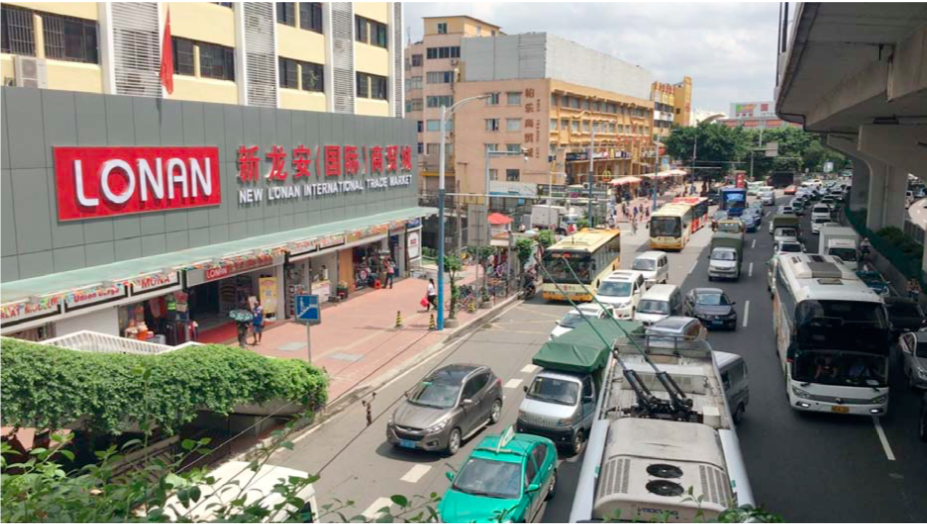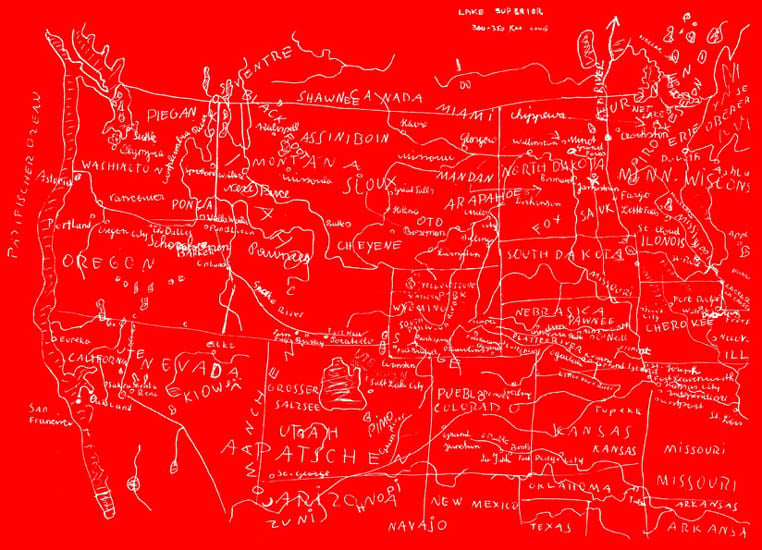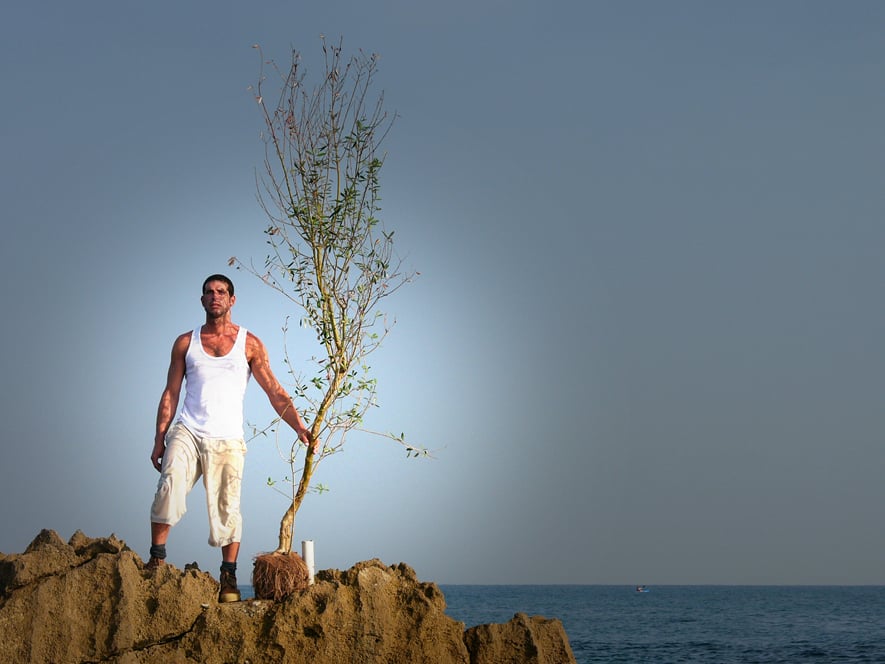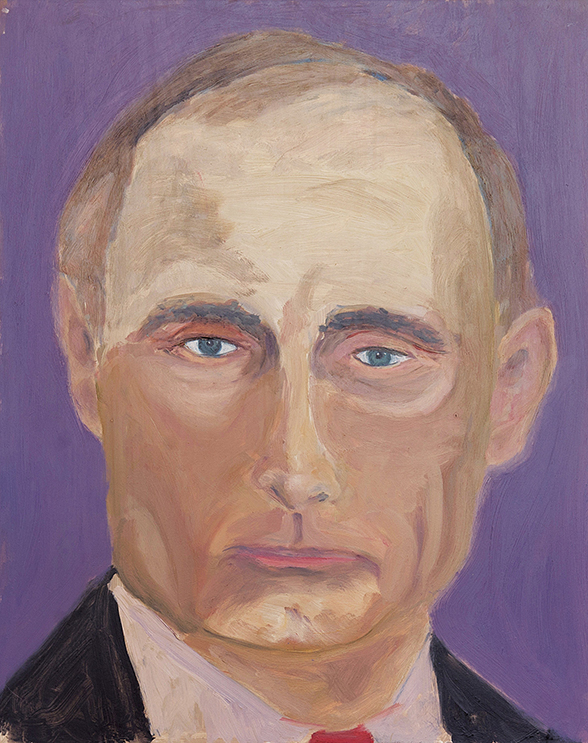
© » KADIST
Edgardo Aragón
In the agricultural areas of Mexico, Indigenous people use the mylar magnetic tape unspooled from VHS cassettes as an alternative to the scarecrow—the reflective tape flutters in the wind and does an excellent job scaring birds away from crops. This kind of creative reuse of materials (overproduced and devalued) that flow through the global trade of consumer goods, is especially rich in Mexico and other parts of Latin America. In 2020, during a period of isolation due to Covid-19, Edgardo Aragón unspooled a VHS tape and installed it in his father’s crop of corn for six months.
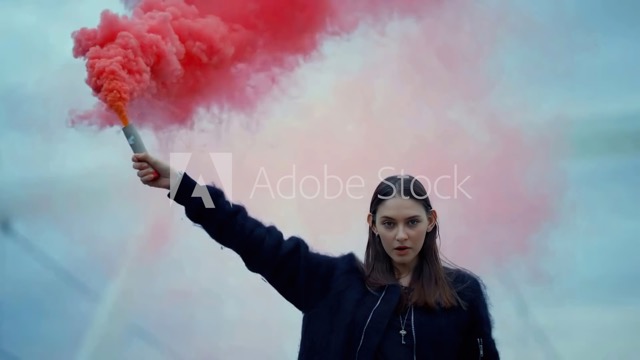
© » KADIST
Juan Obando
They/Them by Juan Obando is a video essay and deepfake that uses Adobe Stock clips, maintaining their branded watermark, but animating the scenes underneath with a narrative of self-critical awareness. It’s a meta-narrative that uses the staged scenarios (as evidence) to talk about the variable politics (and mercenary capitalism) of the stock footage industry and the misinformation dilemma we’re facing with the arrival of AI technology. In a surprising reversal, a deepfake is used to tell the truth.

© » KADIST
Piotr Szyhalski
Drawing & Print (Drawing & Print)
The series of ink drawings and hand-lettered texts, titled COVID-19: Labor Camp Reports , were made and posted daily by artist Piotr Szyhalski on the @LaborCamp Instagram account, capturing the politically fraught Trump era and looking directly at some of the most painful aspects of life during COVID-19. Accompanied by poignant captions written or chosen by the artist, this ongoing series, running for more than 100 days and still counting, operates as both a witness to the global health crisis and a record of the unprecedented moment experienced collectively. In the dozens of drawings, Szyhalski draws upon his personal collection of historical material, citing the compositions and graphic style of war-time politprop, religious pamphlets, military recruitment posters, and other forms of state and anti-state propaganda.

© » KADIST
Victor & Sergiy Kochetov
According to Viktor Kochetov, Meeting with the awaited guest / Yellow Bows is the first hand-colored print he ever made. Although this might well be a part of the artist’s mythology, this image perfectly demonstrates the methodology the Kochetovs used in their work. The snapshot itself was created during a journalistic assignment to document the meeting between a WWII veteran and school children in the Kharkiv region.

© » KADIST
Xijing Men
Welcome to Xijing – Xijing Olympics is the third of five chapters in the Xijing series. Produced concurrently to the 2008 Beijing Olympics, the Xijing Men stage their own versions of the Olympics, comprising events such as shot-put throwing with eggs, relay races with cigarettes instead of batons and marathon naps, often umpired by family members and children. Through slapstick skits they satirize the spectacle of stately ceremonies by playing on the absurdity of state pomp, for a reflection on modern society.

© » KADIST
Victor & Sergiy Kochetov
Having a press card allowed Viktor Kochetov to photograph freely in public places, access to which was strictly regulated for amateurs. Seeking a way to transgress the reportage canon, the Kochetovs employed a method of taking images of large gatherings that emphasize the structure and “patterns” of the imaginary collective body. His 1978 photo of women sorting corn, titled Working women, builders of communism, are sorting corn… , is organized on this principle: the scarfs on the workers’ heads are perceived as an element of uniform, which creates a visual rhythm.

© » KADIST
Victor & Sergiy Kochetov
Ukraine-Russia / Volleyball by Viktor and Sergiy Kochetov features a concrete monument of women volleyball players before the railway station in the village of Vodyanoye, Kharkiv region. It’s a typical Soviet sculptural composition, thousands of which were casted in the USSR during this period. Many can still be found all over post-Soviet territories, leading to regular debates on the destiny of this visual heritage in Ukraine.

© » KADIST
Che Onejoon
For the last few years, Che Onejoon has been focusing on the relationships between African countries and North Korea. He has attempted to interpret the ongoing Cold War in the Korean peninsula from a new geopolitical perspective. His resulting body of work focuses on the memorial monuments, statues and architectures that were built in 13 different African countries by North Korean government.

© » KADIST
Wendy Cabrera Rubio
Victory Through Air Power III (1943) by Wendy Cabrera Rubio is part of a series of quilted maps that reproduce different scenes from the eponymous film. Victory Through Air Power the film is an animated history of aviation produced by Walt Disney, and likely one of the first educational and documentary films using animation. Disney’s political agenda, specifically towards Latin America, has played an important role in Cabrera’s practice.

© » KADIST
Sam Samiee
Mojtaba was painted in 2015 as a part of the Bedroom Posters series. Bedroom Posters feature the same beautiful boys who could well be out of a set of fashion editorials. Mojtaba, Manuel, Titus, and a boy found on Tumblr are on the verge of becoming men, yet are narcissistic adolescents prone to fall into the trap of ideological extremes.

© » KADIST
Artur Zmijewski
Zeppelintribüne (2002) was shot near the Zepelintribune in Nuremberg, designed by Albert Speer, chief architect of the Third Reich. The 360-metre-long structure is part of a larger architectural complex called the Zeppelinfeld, which the National Socialist used for their marches and rallies. The Zeppelintribune was immortalized in the Leni Reifenstahl’s film-propaganda masterpiece the Triumph of the Will, a record of a 1934 Nazi Party rally.
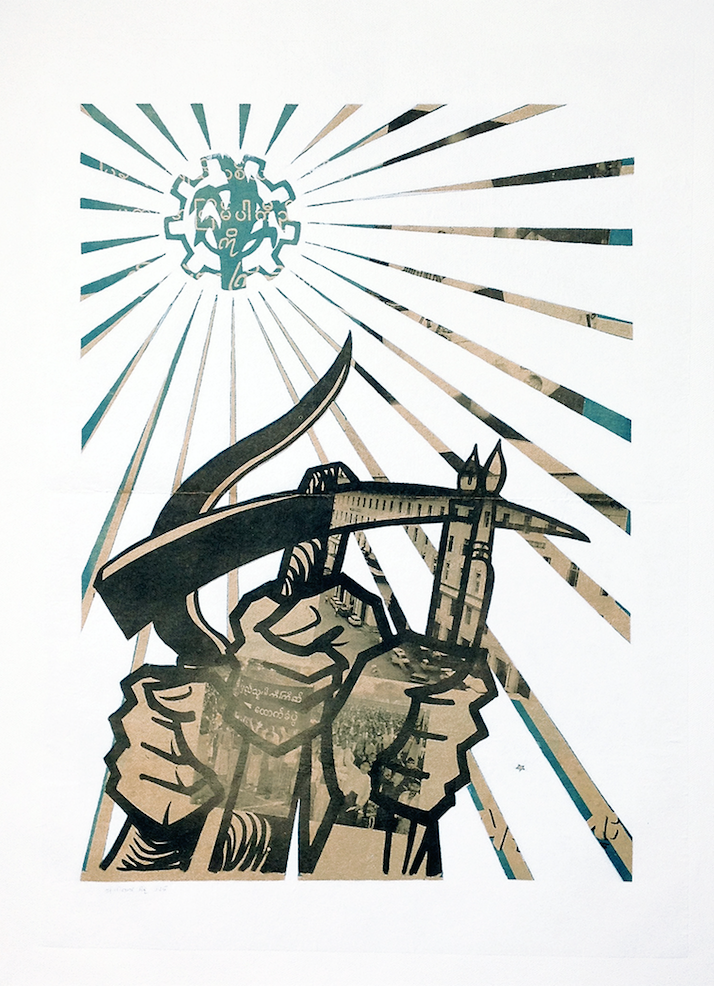
© » KADIST
Tun Win Aung and Wah Nu
Tun Win Aung and Wah Nu initiated the series 1000 Pieces (of White) in 2009, as a way to produce objects and images as a portrait of their shared life as partners and collaborators. Interweaving public and private, personal anecdote and pop cultural appropriation, their work attests to the poetry of the everyday. In addition to found and original materials, the artists have occasionally incorporated drawings and sketches by artist friends, and even by their own daughter into the ongoing work.

© » KADIST
Asli Çavusoglu
Drawing & Print (Drawing & Print)
Future Tense (2017), a 16-page diary, is a project in the form of a newspaper that brings together 50 oracles by people from various political opinions and ethnicities who consulted sand, lead, tarot cards, coffee grounds, blank sheets of A4 paper, dreams, water, clairvoyance, astrology, pendulums and horoscopes in order to reveal the point that Turkey has reached in news casting. The 2016 coup d’etat led to the closure of many news sources and the incarceration of writers and journalists. Following the growing censorship and shift away from the rule of law, the number of fortunetellers and astrologers is steadily increasing.

© » KADIST
Peter Friedl
Peter Friedl’s projects place aesthetic questions within an expanded field that takes into account the social, political and philosophical context. This textile piece quotes and diverts a flag with a red background and the central star of the Kurdistan National Liberation Front (ERNK, a military organization linked to PKK, founded in 1985 and disbanded in 2000), and not the national flag of Kurdistan. The artist became interested as from 1994, when the town of Lice was destroyed by the Turkish army and the PKK was expelled from Germany.

© » KADIST
Marie Voignier
Tourisme International was shot as the recording of a show on the scale of a country. In the urgency of perpetual travel, this tourist journey visits monuments, museums, institutions presented by North Korean guides whose voices we do not hear. Marie Voignier entirely redesigned the sound of each sequence in post-synchronization, making only the living experiences of footsteps and rustling of clothes audible, to create a new universe, disconnected from the official discourses.

© » KADIST
Pio Abad
Comprising two sculptures, one photograph and one video, the installation Malakas & Maganda (1986 – 2016) questions the mythological iconography of the Filipino conjugal dictators Ferdinand and Imelda Marcos and thus addresses the construction of propaganda representation and the role of art facing current events. The work is organized around the leftovers of a copy of a monumental sculpture of Imelda Marcos, which the artist had commissioned and whose remains were stored in his studio. Several included elements show how this body of work has evolved over time and in reaction to political events in the Philippines.

© » KADIST
Thomas Kilpper
Drawing & Print (Drawing & Print)
These two images come from the series called “State of Control” which Kilpper made in the building formerly occupied by the Stasi in Berlin. As a symbol of the past there could be none more powerful than this. By carving into its floor, Kilpper laid bare its history by making images of its occupants and political figures associated with that period of history.

© » KADIST
Miao Ying
As part of her project Chinternet Plus , a “counterfeit ideology” and parodic take on the strategy “Internet Plus” launched by Chinese Prime Minister Li Keqiang in 2015, the video work Post commentary, monetary likes, Morgan Freeman’s advice on reality gives an insight into Internet Culture in China. The brilliantly edited video by Miao Ying presents various scenes from a popular Chinese live-streaming platform together with extracts from a TV show featuring Morgan Freeman talking about “What Is Reality”. This work is exemplary of the artist’s practice, questioning, with a degree of humour, the sometimes dramatic consequences of the Internet as it consumes society.
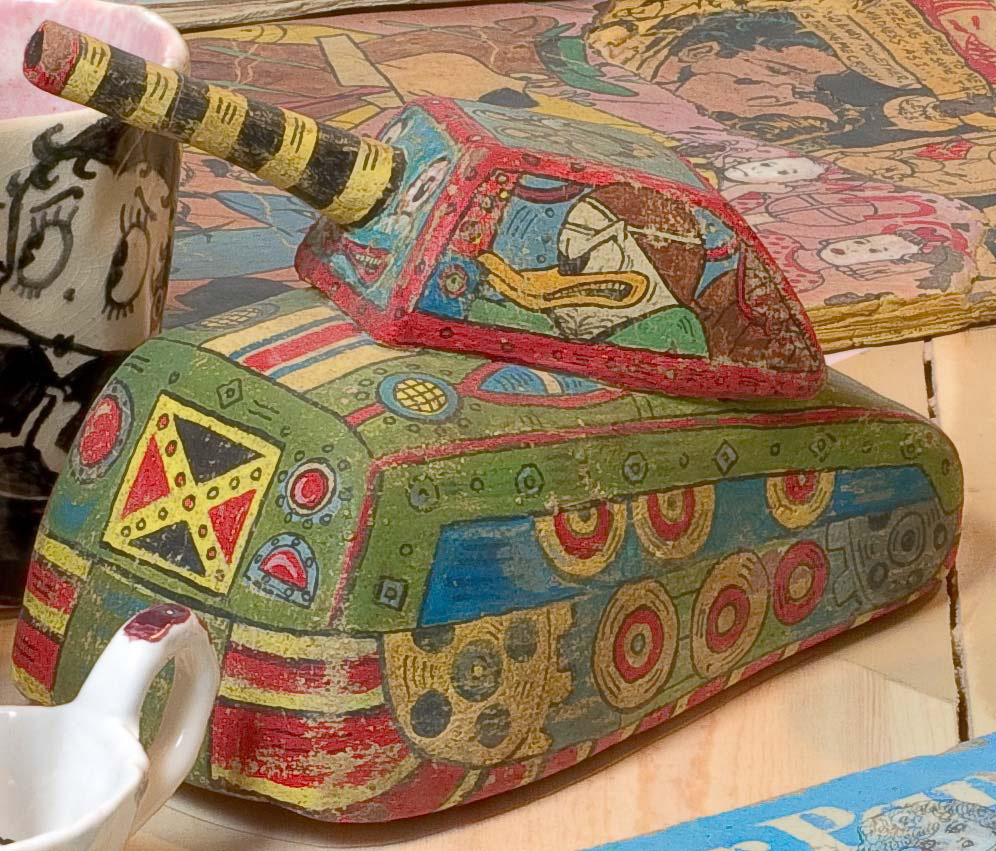
© » KADIST
Kristen Morgin
Donald of Doom Tank (2008) is a replica of a vintage metal toy with Donald Duck’s image one side and a soldier on the other. During World War II, the Walt Disney Company produced series of cartoon shorts that featured Donald Duck’s nightmare of working in an inhumane artillery factory in Nazi Germany and serving in the U. S. Army. By animating and normalizing war and military life, these cartoons not only achieved widespread popularity, but functioned as government propaganda.

© » KADIST
Gabriella and Silvana Mangano
There is no there by Gabriella and Silvana Mangano is a black and white looped video with sound, in conjunction with a live performance. The work is inspired by the Blue Blouse, a political propaganda theater movement which spread across the Soviet Union in the mid-1920s. More specifically, the work takes the form of ‘Living Newspapers’, which were performances based on topical news events.

© » KADIST
Julieta Aranda
The video Swimming in rivers of Glue is composed of various images of nature, exploring the themes of exploration of space and its colonization. The images show the diversity of forms of life on earth. These forms are associated with texts that relay a form of propaganda.

© » KADIST
Sun Xun
Sun Xun’s lushly illustrated, dynamic short film Mythological Time is a dreamy chronicle of rapacious industrial development, the mythical qualities of state propaganda, and the constancy of change, as experienced by an unnamed coal mining town. While it is not named in the film itself, the town at the center of Mythological Time is a re-imagined incarnation of Sun’s hometown of Fuxin, in the northern Chinese province of Liaoning. Sandwiched between North Korea and Inner Mongolia, Fuxin is a poor coal-mining region that used to contain one of China’s largest open-pit mines and has historically been the site of significant conflict, thanks to its rich mineral resources.

© » KADIST
Yael Bartana
Yael Bartana received great international attention for the trilogy series And Europe Will be Stunned (2007 – 2011). The series, which includes the films Mary Koszmary (Nightmare) (2007) , Mur i wieza (Wall and Tower) (2009), and Zamach (Assassination) (2011), centers on a young Polish politician’s call for the return of 3.3 million Jewish people who emigrated to Palestine. The films employ the same techniques of Leni Riefenstahl’s Nazi propaganda films, combining fact and fiction with the past and the present.

© » KADIST
Yao Jui-Chung
Long Long Live (2013) takes the viewer to the setting of the Oasis Villa on Green Island, once a reform and re-education prison to house political prisoners during Taiwan’s martial law period. In black and white, Yao depicts the historical site as an eerie abandoned compound. Reflecting on the centenary of the HsinHai Revolution and the end of the Cold War, Yao questions the existence of an ever lasting dynasty or “transcendental Rules of History.” The soundtrack features a sole voice reverberating through loud speakers.

© » KADIST
Minouk Lim
The Possibility of the Half by Minouk Lim is a two-channel video projection that begins with a mirror image of a weeping woman kneeling on the ground. As both frames progresses, a montage of large crowds of mourners are depicted in slow motion interwoven with a variety of images including bomb explosions, fireworks, vacant stores, sunsets and sunrises, beachside landscapes, and infrared shots. At midpoint, life in the year 4012 is foreshadowed down to living insects and the video concludes back in the year 2012 as a burning inferno.
Victor & Sergiy Kochetov
Viktor Kochetov became engaged in photography in 1968 and was also a professional photographer in film and photo laboratories...
Minouk Lim
- location: Seoul, South Korea
- year born: 1968
- gender: female
- nationality: Korean
Marie Voignier
Marie Voignier’s work presents a subtle criticism of the transitory status of action within the social and political elds...
Peter Friedl
Many of the projects of Peter Friedl, in their heterogeneous medium and style, function as intersection points between countless lines of thought and reference, creating a vast didactic network where dialogues simultaneously merge with critical logic and narrative...
Juan Obando
As a Colombian who studied and now lives in Arizona, Juan Obando has a non-native perspective on the media-obsessed culture of the US...
Thomas Kilpper
- location: Stuttgart, Deutschland
- year born: 1956
- gender: male
- nationality: German
Gabriella and Silvana Mangano
Gabriella Mangano and Silvana Mangano are an artistic duo and identical twins known for their collaborative and performative video practice...
Artur Zmijewski
- location: Warszawa, Polska
- year born: 1966
- gender: male
- nationality: Polish
Wendy Cabrera Rubio
Wendy Cabrera Rubio is part of a generation of artists that has been invested in revisiting the history of Mexican arts and crafts with a multidisciplinary and pedagogical approach...
Tun Win Aung and Wah Nu
Wah Nu and Tun Win Aung, respectively born in 1977 and 1975, Yangon, Myanmar...
Julieta Aranda
- location: Mexico City, Mexico
- year born: 1975
- gender: female
- nationality: Mexican
- home town: Mexico City, Mexico
Sun Xun
- location: Hangzhou, China
- year born: 1980
- gender: male
- nationality: Chinese
- home town: Fuxin, Liaoning Provence, China
Piotr Szyhalski
Polish born artist Piotr Szyhalski was originally trained as a poster designer...
Miao Ying
Miao Ying’s practice, including video, installation, website, photography and painting, highlights attempts to discuss mainstream technology and contemporary consciousness and its impact on our daily lives, while accounting for new modes of politics, aesthetics and consciousness created through representation of reality through technology...
Xijing Men
The Xijing Men hail, conceptually, from the fictitious city of Xijing, an imagined state in East Asia...
Yao Jui-Chung
- year born: 1969
- gender: male
- nationality: Taiwanese
- home town: Taipei, Taiwan
Pio Abad
In his practice, Pio Abad looks into the social and political significance of objects usually consigned to the sidelines of history...
Sam Samiee
Sam Samiee is an Iranian painter, visual artist, essayist and educator based in Amsterdam and Tehran...
Yael Bartana
- location: ‘Afula, Yisra'el
- year born: 1970
- gender: female
- nationality: Israeli
Che Onejoon
Che Onejoon started working with photography in mandatory military service as an evidence photographer for the South Korean Combat Police recording different incidents for proof...
-
1970-1979
Victor & Sergiy Kochetov
1978Having a press card allowed Viktor Kochetov to photograph freely in public places, access to which was strictly regulated for amateurs...
-
1980-1989
Victor & Sergiy Kochetov
1982According to Viktor Kochetov, Meeting with the awaited guest / Yellow Bows is the first hand-colored print he ever made...
-
1990-1999
Victor & Sergiy Kochetov
1992Ukraine-Russia / Volleyball by Viktor and Sergiy Kochetov features a concrete monument of women volleyball players before the railway station in the village of Vodyanoye, Kharkiv region...
-
2000-2009
Peter Friedl
2001Peter Friedl’s projects place aesthetic questions within an expanded field that takes into account the social, political and philosophical context...
Artur Zmijewski
2002Zeppelintribüne (2002) was shot near the Zepelintribune in Nuremberg, designed by Albert Speer, chief architect of the Third Reich...
Yael Bartana
2007Yael Bartana received great international attention for the trilogy series And Europe Will be Stunned (2007 – 2011)...
Xijing Men
2008Welcome to Xijing – Xijing Olympics is the third of five chapters in the Xijing series...
Kristen Morgin
2008Donald of Doom Tank (2008) is a replica of a vintage metal toy with Donald Duck’s image one side and a soldier on the other...
Thomas Kilpper
Drawing & Print
2009(Drawing & Print) These two images come from the series called “State of Control” which Kilpper made in the building formerly occupied by the Stasi in Berlin...
-
2010-2019
Tun Win Aung and Wah Nu
2011Tun Win Aung and Wah Nu initiated the series 1000 Pieces (of White) in 2009, as a way to produce objects and images as a portrait of their shared life as partners and collaborators...
Minouk Lim
2012The Possibility of the Half by Minouk Lim is a two-channel video projection that begins with a mirror image of a weeping woman kneeling on the ground...
Che Onejoon
2013For the last few years, Che Onejoon has been focusing on the relationships between African countries and North Korea...
Yao Jui-Chung
2013Long Long Live (2013) takes the viewer to the setting of the Oasis Villa on Green Island, once a reform and re-education prison to house political prisoners during Taiwan’s martial law period...
Marie Voignier
2014Tourisme International was shot as the recording of a show on the scale of a country...
Gabriella and Silvana Mangano
2015There is no there by Gabriella and Silvana Mangano is a black and white looped video with sound, in conjunction with a live performance...
Miao Ying
2016As part of her project Chinternet Plus , a “counterfeit ideology” and parodic take on the strategy “Internet Plus” launched by Chinese Prime Minister Li Keqiang in 2015, the video work Post commentary, monetary likes, Morgan Freeman’s advice on reality gives an insight into Internet Culture in China...
Julieta Aranda
2016The video Swimming in rivers of Glue is composed of various images of nature, exploring the themes of exploration of space and its colonization...
Pio Abad
2017Comprising two sculptures, one photograph and one video, the installation Malakas & Maganda (1986 – 2016) questions the mythological iconography of the Filipino conjugal dictators Ferdinand and Imelda Marcos and thus addresses the construction of propaganda representation and the role of art facing current events...
Asli Çavusoglu
Drawing & Print
2018(Drawing & Print) Future Tense (2017), a 16-page diary, is a project in the form of a newspaper that brings together 50 oracles by people from various political opinions and ethnicities who consulted sand, lead, tarot cards, coffee grounds, blank sheets of A4 paper, dreams, water, clairvoyance, astrology, pendulums and horoscopes in order to reveal the point that Turkey has reached in news casting...
-
2020-2029
Edgardo Aragón
2020In the agricultural areas of Mexico, Indigenous people use the mylar magnetic tape unspooled from VHS cassettes as an alternative to the scarecrow—the reflective tape flutters in the wind and does an excellent job scaring birds away from crops...
Piotr Szyhalski
Drawing & Print
2020(Drawing & Print) The series of ink drawings and hand-lettered texts, titled COVID-19: Labor Camp Reports , were made and posted daily by artist Piotr Szyhalski on the @LaborCamp Instagram account, capturing the politically fraught Trump era and looking directly at some of the most painful aspects of life during COVID-19...
Wendy Cabrera Rubio
2021Victory Through Air Power III (1943) by Wendy Cabrera Rubio is part of a series of quilted maps that reproduce different scenes from the eponymous film...
Juan Obando
2023They/Them by Juan Obando is a video essay and deepfake that uses Adobe Stock clips, maintaining their branded watermark, but animating the scenes underneath with a narrative of self-critical awareness...

